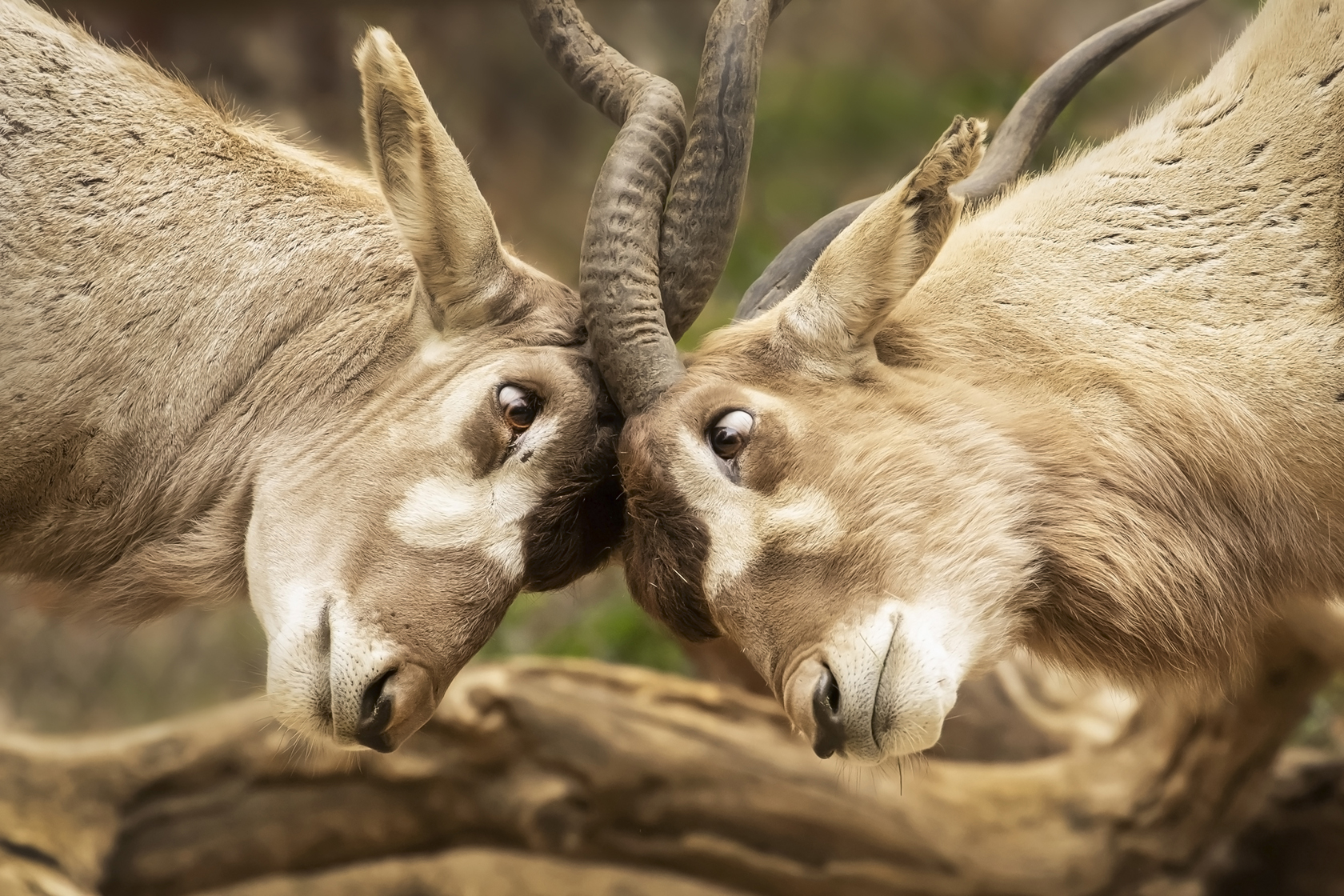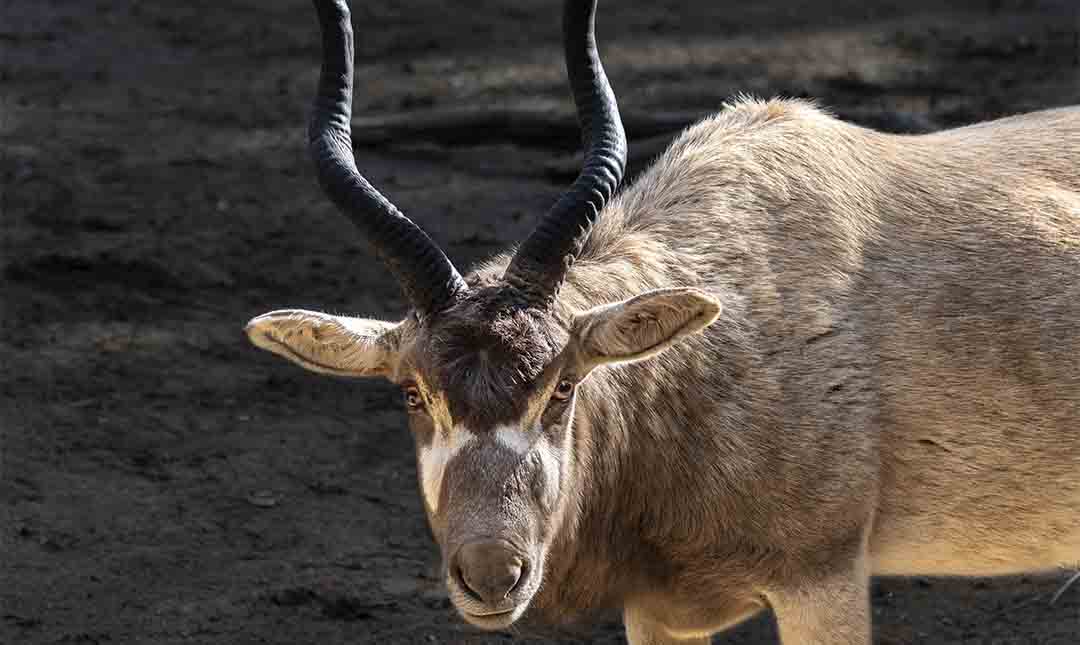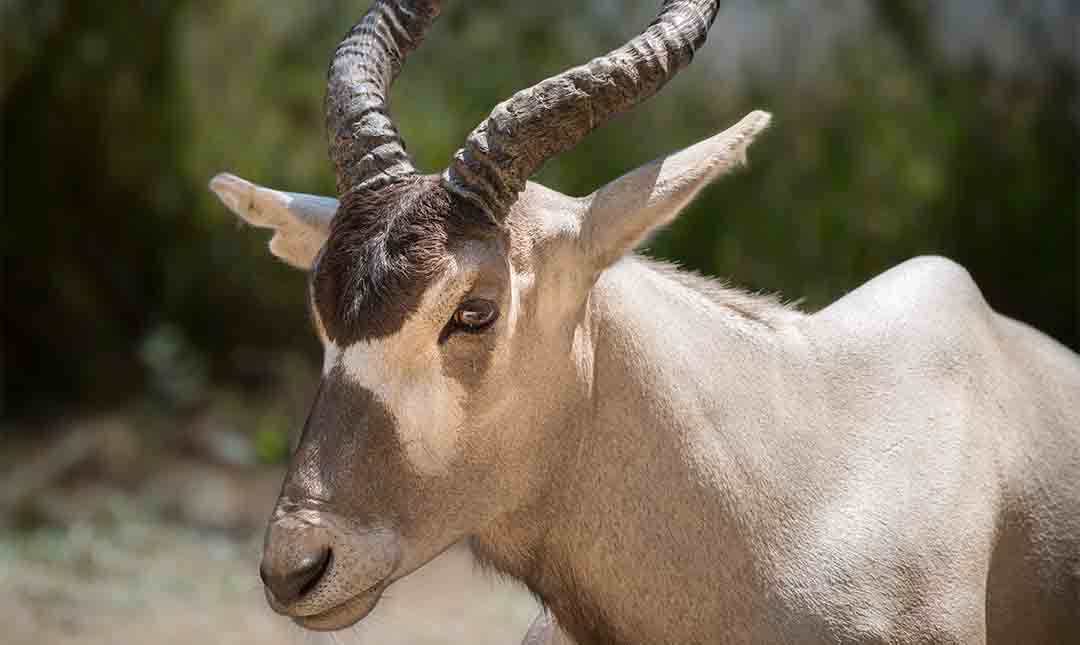About
Nomads of the Sahara Desert, addax live in one of the most inhospitable climates on earth. They endure extreme temperature ranges with scorching summer heat and very cold winters. Rainfall averages three inches per year. During periods of drought they can go without drinking water and survive on the moisture consumed in succulent plants and wild melons. Addax adaptations for this arid climate include a white colored coat that reflects heat and helps them blend into the desert landscape. As with camels, large, flexible hooves splay out to distribute weight while walking through sand. An excellent sense of smell and good peripheral vision allow addax to track rain and head for patches of vegetation miles away.
Addax rest during the hottest hours of the day near bushes and rocks or in shallow shelters they dig with their front legs and graze when temperatures are cooler. These outcroppings also provide shelter from sandstorms. Their hooves release a scent on the ground that allows a lone addax to find its way back to the herd. Males use spiral horns that can 3.5 feet to spar for mating rights or to chase intruders away from the herd.
These horse-like antelope are in imminent danger of extinction. Drought, hunting, and the expansion of pastureland has taken a toll on this species. Once widespread in all countries sharing the Sahara Desert, the wild population is now estimated at 30 to 90 mature individuals. The L.A. Zoo participates in a Special Survival plan to help maintain genetically diverse populations of this species in human care.
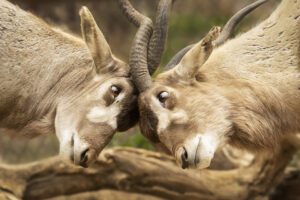
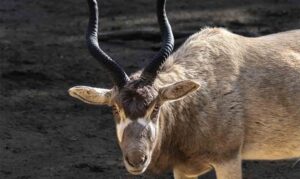
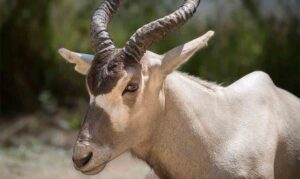
Habitat
Arid, sandy desert in small isolated parts of Niger and Chad in Northern Africa.
Diet
Addax are herbivores, grazing on grasses, wild cucumbers, melons, and succulent plants. They eat some browse including tree shoots, shrubs, acacia seed pods, bulbs, and tubers.
Physical Characteristics
Body length is 5.5 feet. Height at shoulder is up to 3.5 feet. Weight ranges from 130–280 pounds with adult males marginally larger than females.
LOCATION WITHIN THE ZOO
You can find this animal in the “Animals of the Drylands” section. See Zoo Map.

